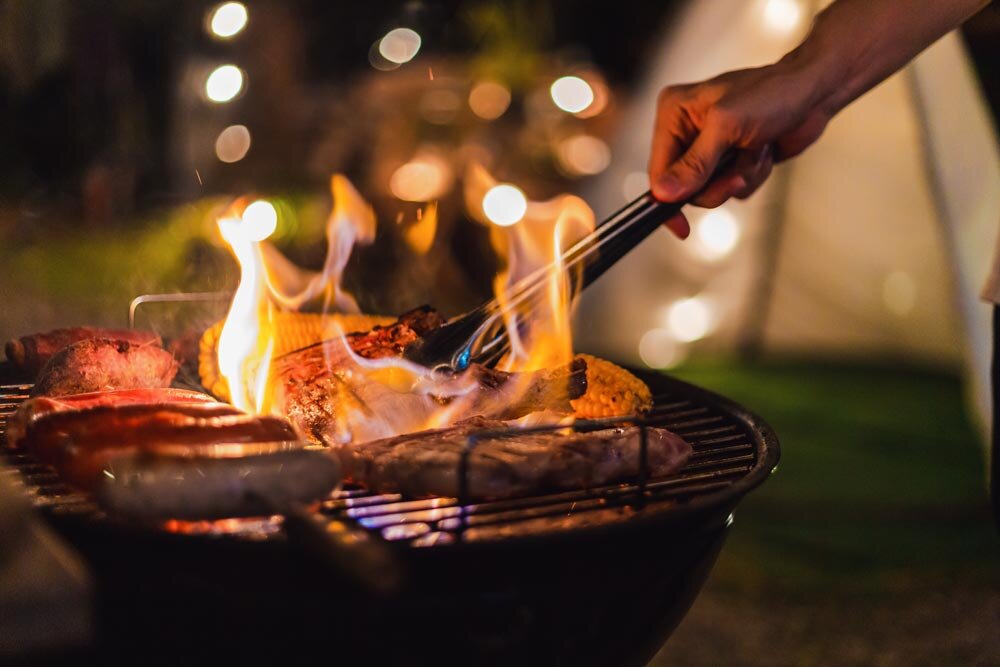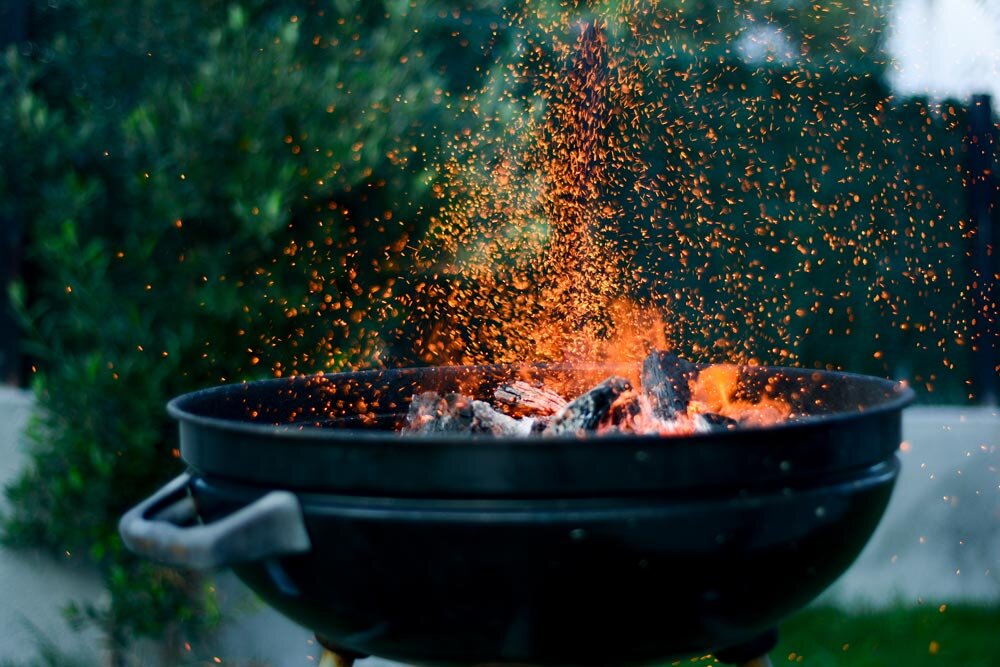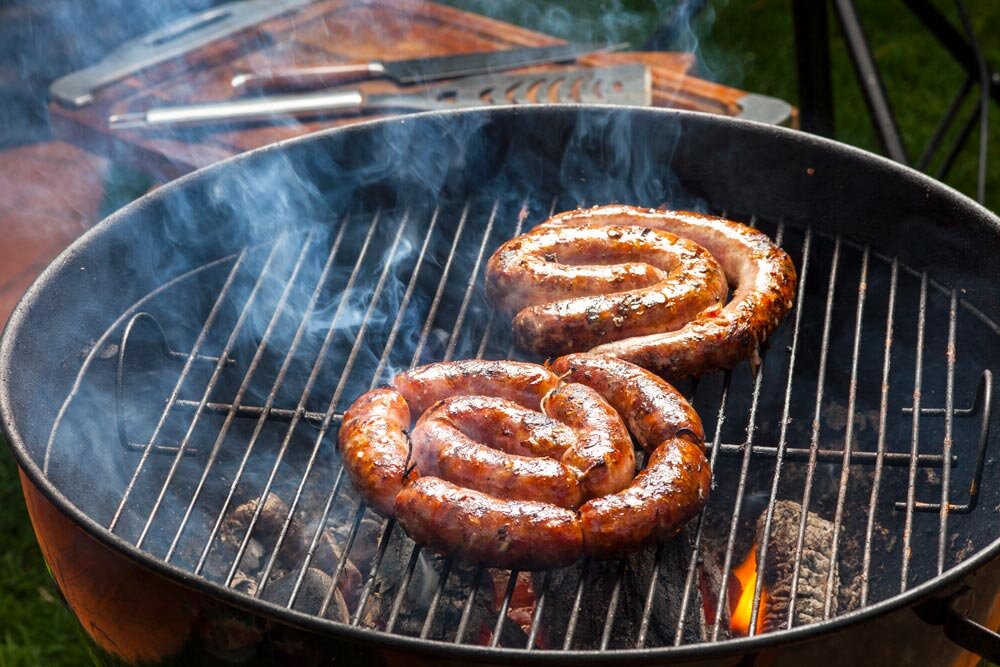Braai: The unofficial religion of South Africa
For South Africans, nothing beats a braai.
For non-South Africans, a “braai” is to grill (meat) over an open fire (wood, charcoal, briquettes). There’s always plenty of food to share – biltong, droëwors, and chips and dip to start, followed by boerewors (spiced sausages), lamb chops, pork chops, steak and chicken (sometimes considered ‘salad’ by braai purists). Then there’s traditional sides like braaibroodjie (a grilled sandwich filled with sliced tomatoes, onions, cheddar cheese and sweet chutney) and mieliepap (maize porridge with savoury sauce). Even corn on a braai tastes wonderful. Pretty much everything does, if you do it right.
Personally, I tend to use wood when I braai. Grilling food over wood creates a compound called guaiacol, which infuses the meat with a smoky, spicy aroma. In South Africa, there are lots of different types of wood that can be used in a braai. The most common (from my favourite to my least favourite) are sekelbos, kameeldoring, swarthaak, mopani, rooikrans, myrtle, black wattle and blue gum.
This is just my opinion, but here’s a little about each type of wood and why I have come to think the way I do:
Sekelbos
A classic braai wood in South Africa, and is mostly found in desert areas. There the wood bakes in the sun and dries naturally, with a moisture content between 0 and 1%. It has unique natural oils, and a fragrant resin that give great flavour to meat. Most braai wood in South Africa is dark and brown, but sekelbos is yellow. It burns long with little to no smoke, and burns hotter than most braai wood.
I rate it: 24/25
Kameeldoring (Camel Thorn)
An extremely heavy, super dry wood that burns evenly at high temperatures at a very slow pace. It has a lovely musky fragrance, and adds extra smokiness to meat. It’s baked by the African sun to produce wood with a moisture content between 1 and 2%. When it burns, it produces almost no smoke and creates a large number of hot burning coals.
I rate it: 23/25
Swarthaak (Black Thorn)
The little cousin of kameeldoring. It’s extremely heavy and super dry, with a moisture content between 1 and 2%. It burns evenly at high temperatures, and creates a large number of hot burning coals.
I rate it: 23/25
Mopani
Found all over northern South Africa and is naturally termite-resistant. It can be stored outside for very long periods and is very dense and dry, with a moisture content between 2 and 3%. It can be hard to light and burns slowly, but it makes great coals and stays hot for a very long time.
I rate it: 22/25
Rooikrans (Red Garland)
A great hardwood found mostly in Cape province. It’s very dense and dry, with a moisture content between 1 and 3%, and is a real all-rounder when it comes to braai.
I rate it: 21/25
Myrtle
Also known as “hairy wood”, is another great hardwood. It’s very similar to rooikraans – dense and dry, with a moisture content between 2 and 3%. Myrtle is excellent for boerewors, steak and chops, producing less ash than most other types of wood and emitting a nice fragrance as it burns.
I rate it: 20/25
Black Wattle
An invasive plant that’s reddish in colour (despite the name). It’s softer than other hardwoods, with a moisture content between 5 and 10%. It burns very hot and long with glowing coals, and gives the meat a smoky taste.
I rate it: 17/25
Blue Gum
From the eucalyptus family, and is not endemic to South Africa. Compared to many other woods it doesn’t burn very hot, but it does burn for a long time. This is because it’s often a little wet, with a moisture content between 10 and 15%. Blue gum is mostly used in pizza ovens and less often for braaing, as it creates small residual coals. It’s my least favourite of all the wood listed here.
I rate it: 13/25
Since moving to New Zealand, I’ve had to adapt to the different types of wood on offer in this country. There’s no Sekelbos or Kameeldoring here, and no African sun to bake the wood dry all year round.
In my opinion, Manuka and Kanuka are the best options for braai as they’re great all-rounders. You can read more about choosing wood here. There are a lot of different types to try, but just as important is where you get your wood (ethically sourced) and how dry it is.
So whether you’re looking to become a braai convert, or you’re a fellow South African bringing your love of braai to this beautiful country, give Matt at Urban Lumberjack a call. He’s happy to share his knowledge – so you can share the joy of a good braai.



